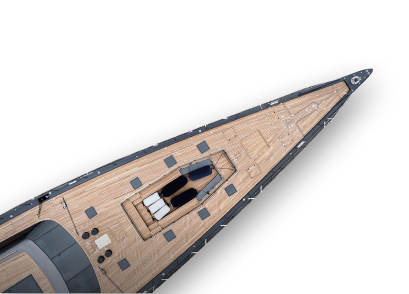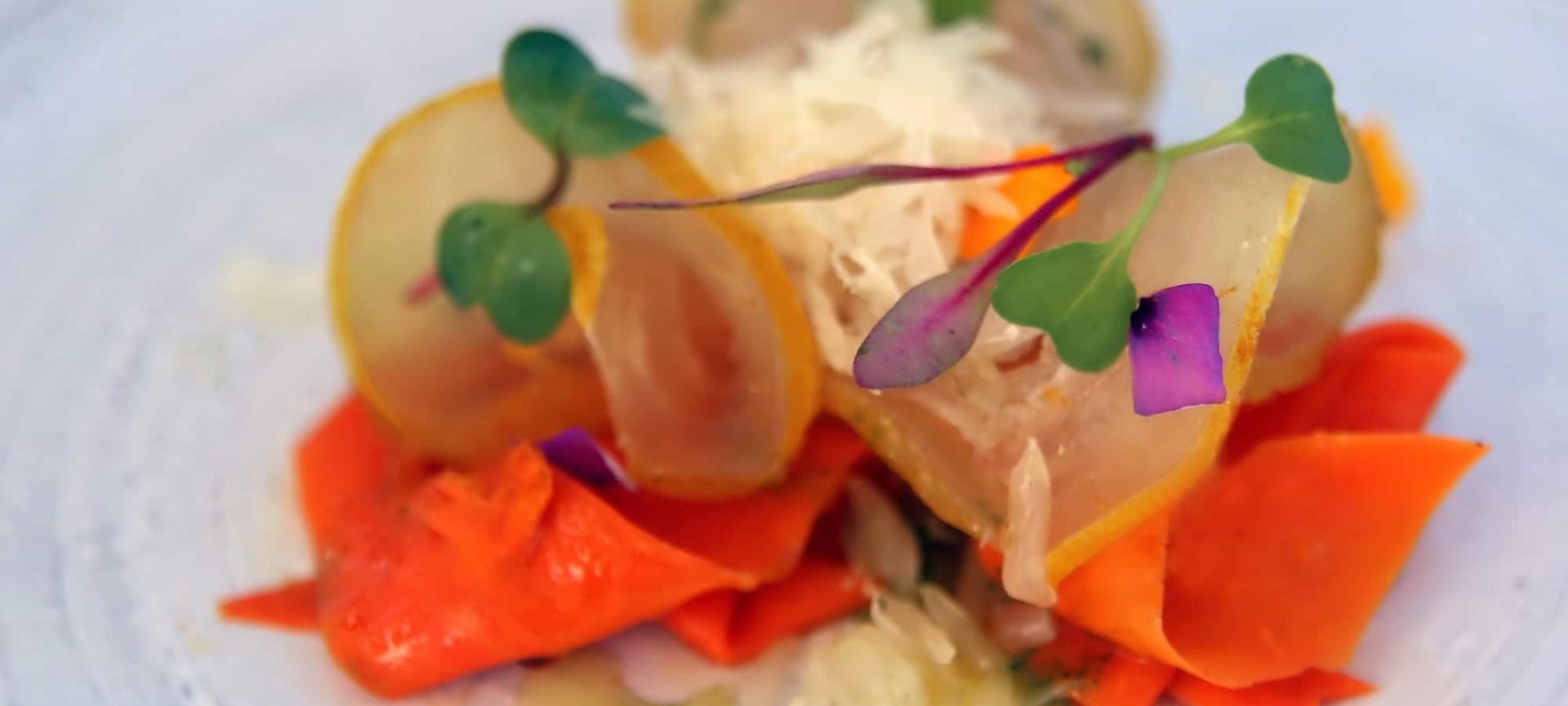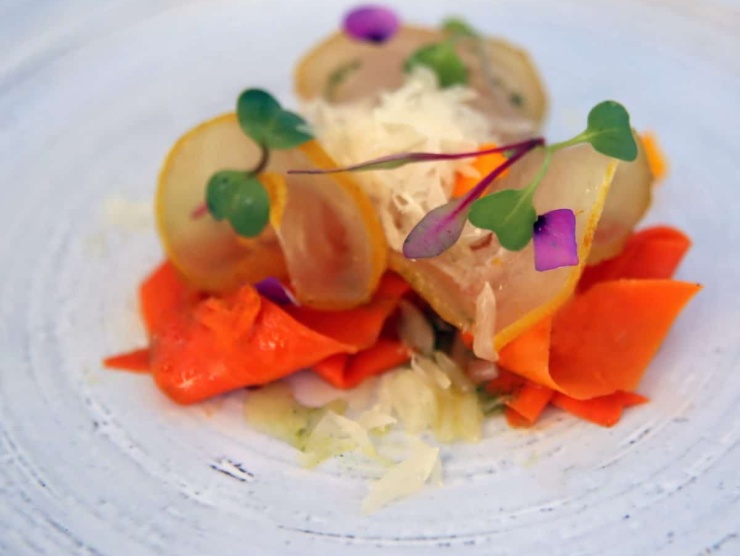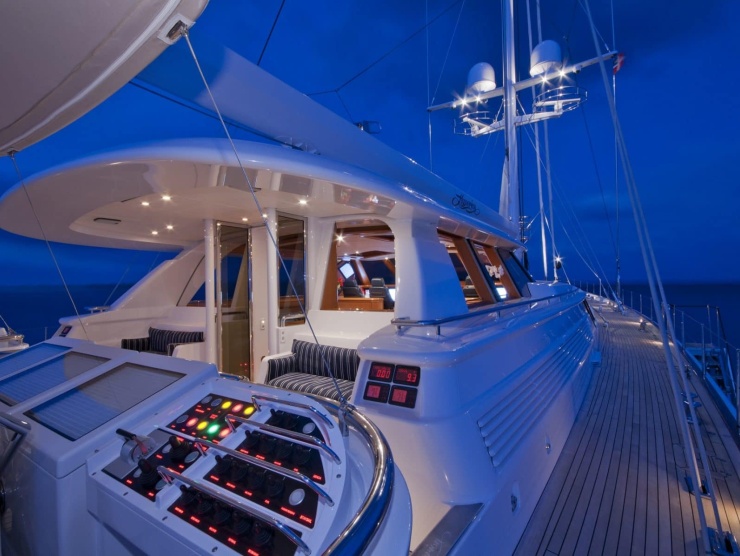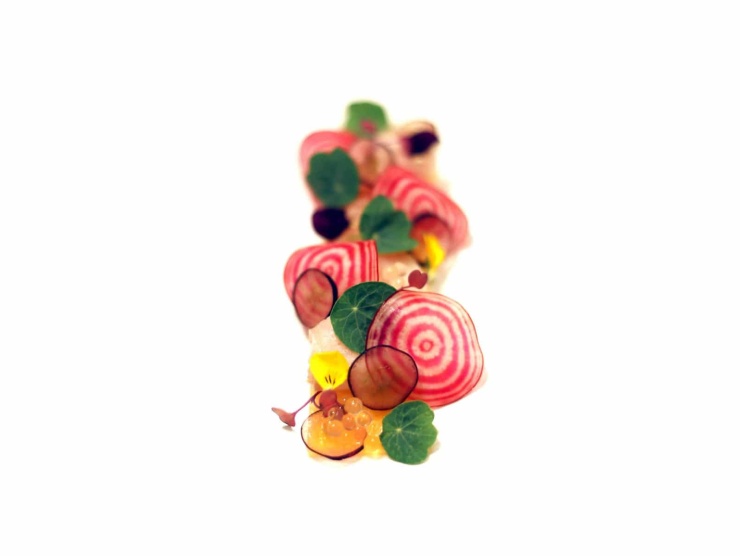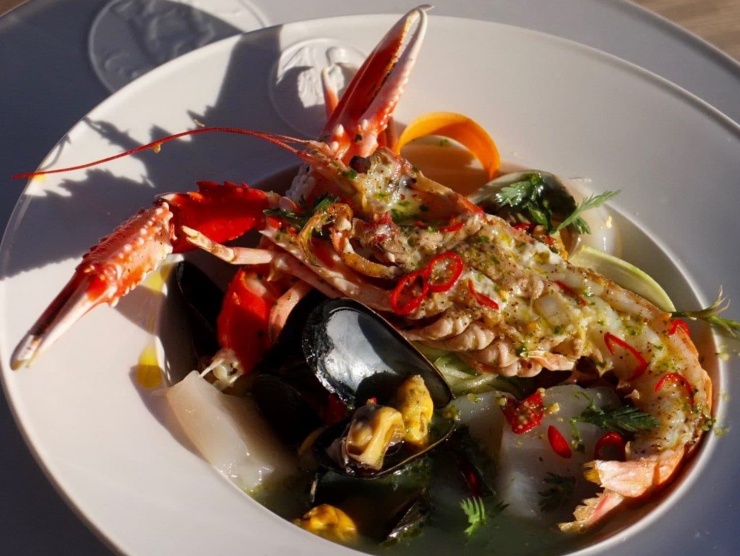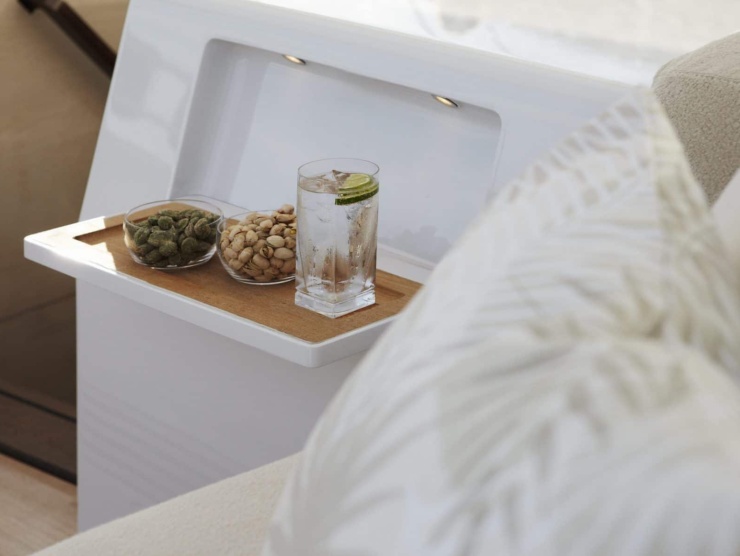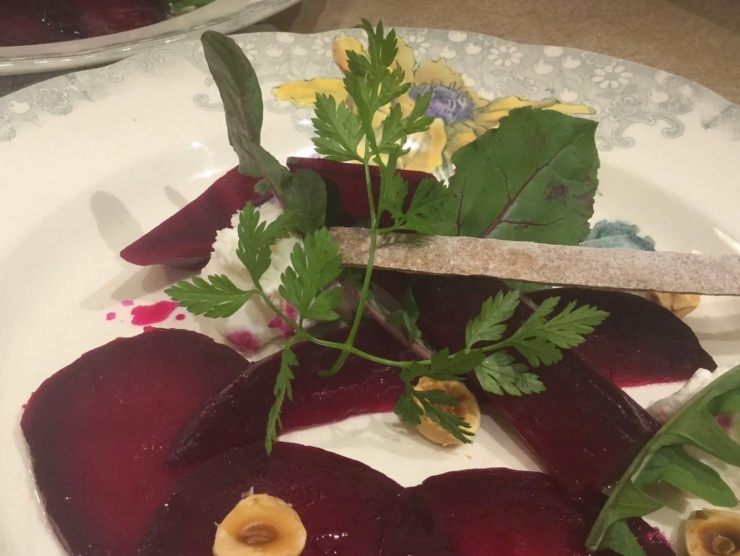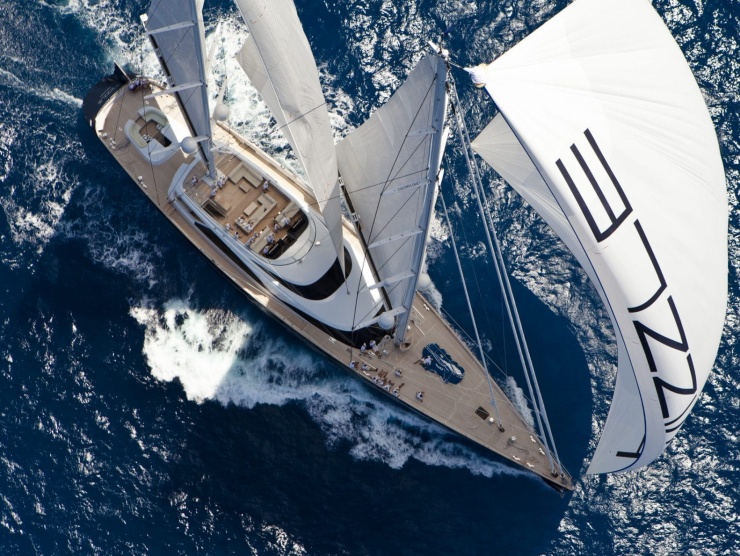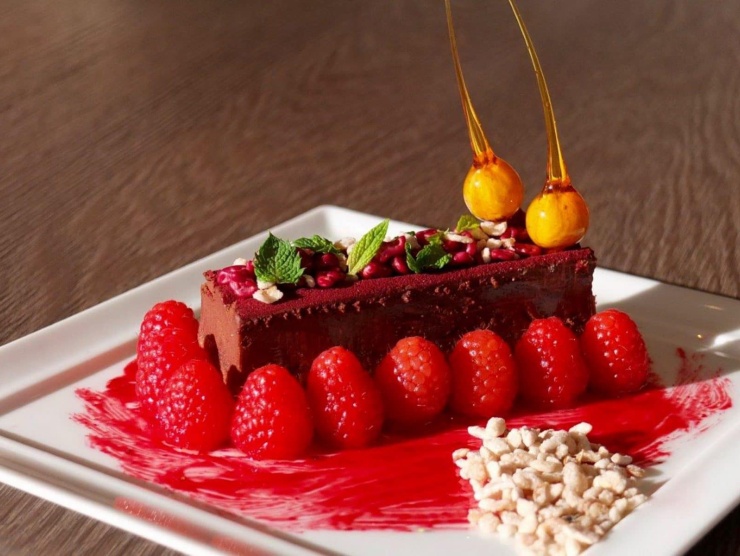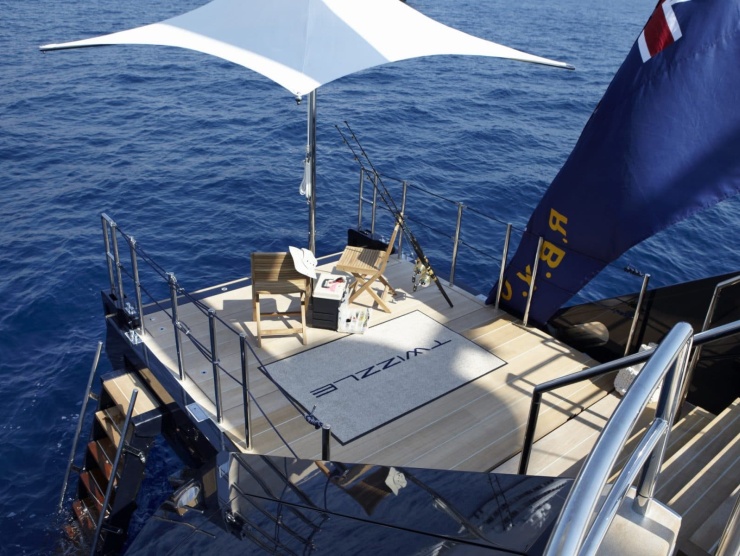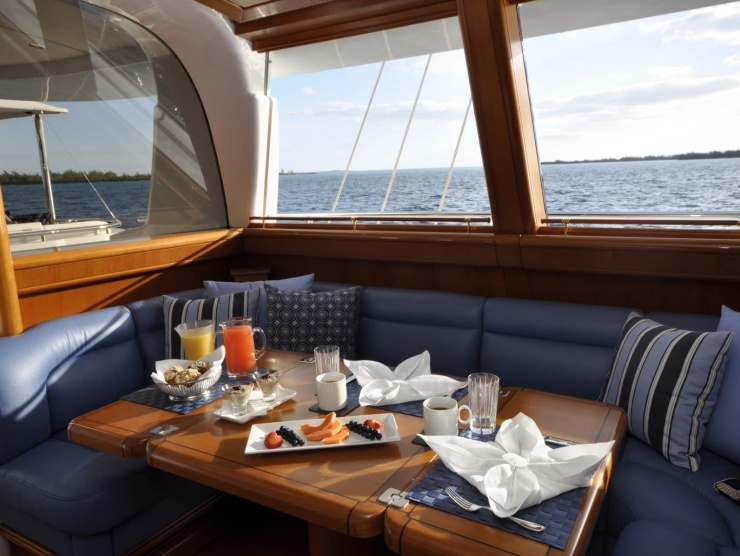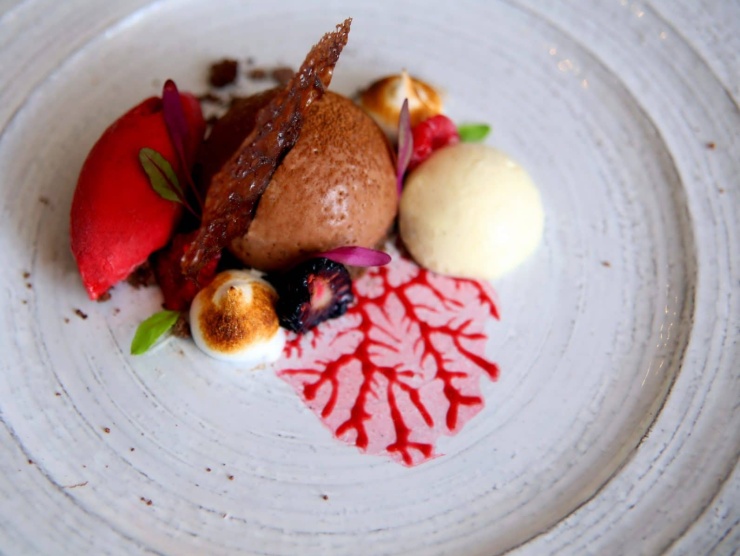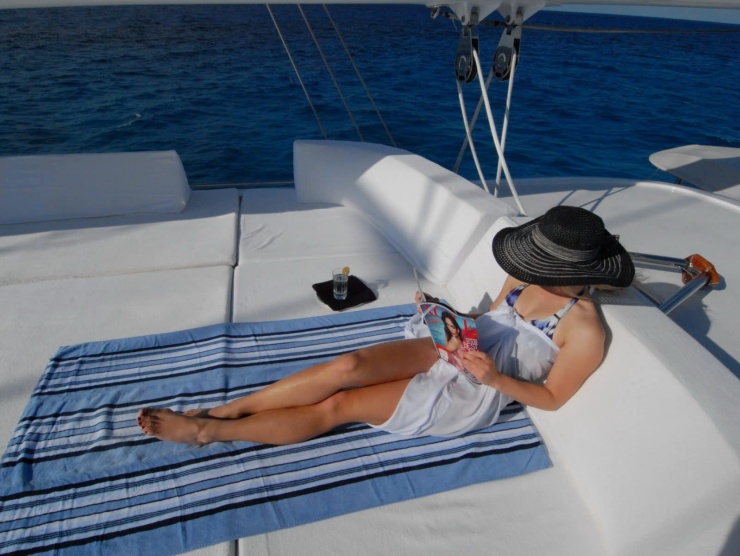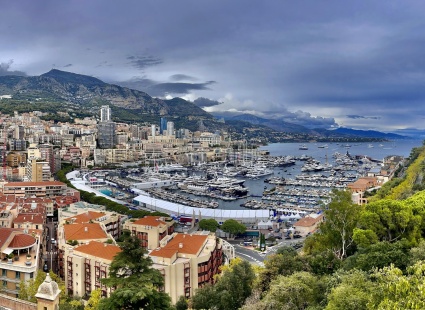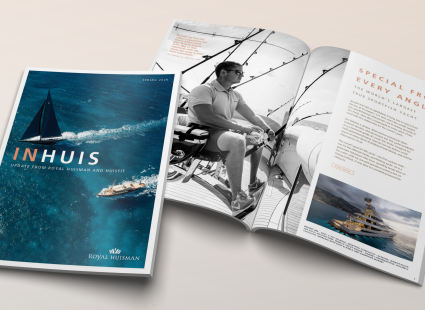MEET THE CHEFS
Delivering 5-star cuisine to guests accustomed to the very best in culinary expertise and service is a challenge even in a top-class restaurant where the head chef is backed up by a whole team of helpers. On a yacht the expectations are just as high, but the chef usually has to go it alone or rely on a stewardess for assistance in the galley. They will often arise at dawn to track down fresh ingredients locally, then after preparing each sumptuous meal the galley has to be scrubbed spotlessly clean, menus drafted and the books balanced before the cycle begins all over again. During a busy charter season, this can mean weeks on the job with little or no time off. Yet despite the demanding schedule, most onboard chefs wouldn’t do anything else. The prospect of seeing the world as you cook may sound idyllic, but it takes experience, skill and hard work to survive at the top as a superyacht chef.
Inhuis tracked down the chefs on two Royal Huisman yachts to find out how they tackle the daily task of catering to the broad range of tastes and dietary requirements of not just the owners, but also the crew and charter guests.
How did you become a superyacht chef?
Shantala: I started working on yachts as a stewardess. After helping out in the galley one day when the chef was ill, the captain suggested I look into becoming a crew/sous chef. I’ve always loved to cook, but I had never considered making it a career. Days later one of my good friends approached me with a crew chef position on her boat. I started that job with no experience and spent the next two years learning as much as I could from the head chef on board before branching out on my own as sole chef on sailing yachts.
Ollie: My brother Jimmy started on yachts first when I was working in London. He told me all about it and I thought it sounded like a wonderful way to work as a chef and see the world. My first boat was a sailing yacht called Dione. That was a busy charter boat, so it was quite a difficult start. After the motoryacht Twizzle I followed the owners when they built their sailing yacht with Royal Huisman and stayed on when she was sold. I’m not on-board together with Jimmy as we rotate.
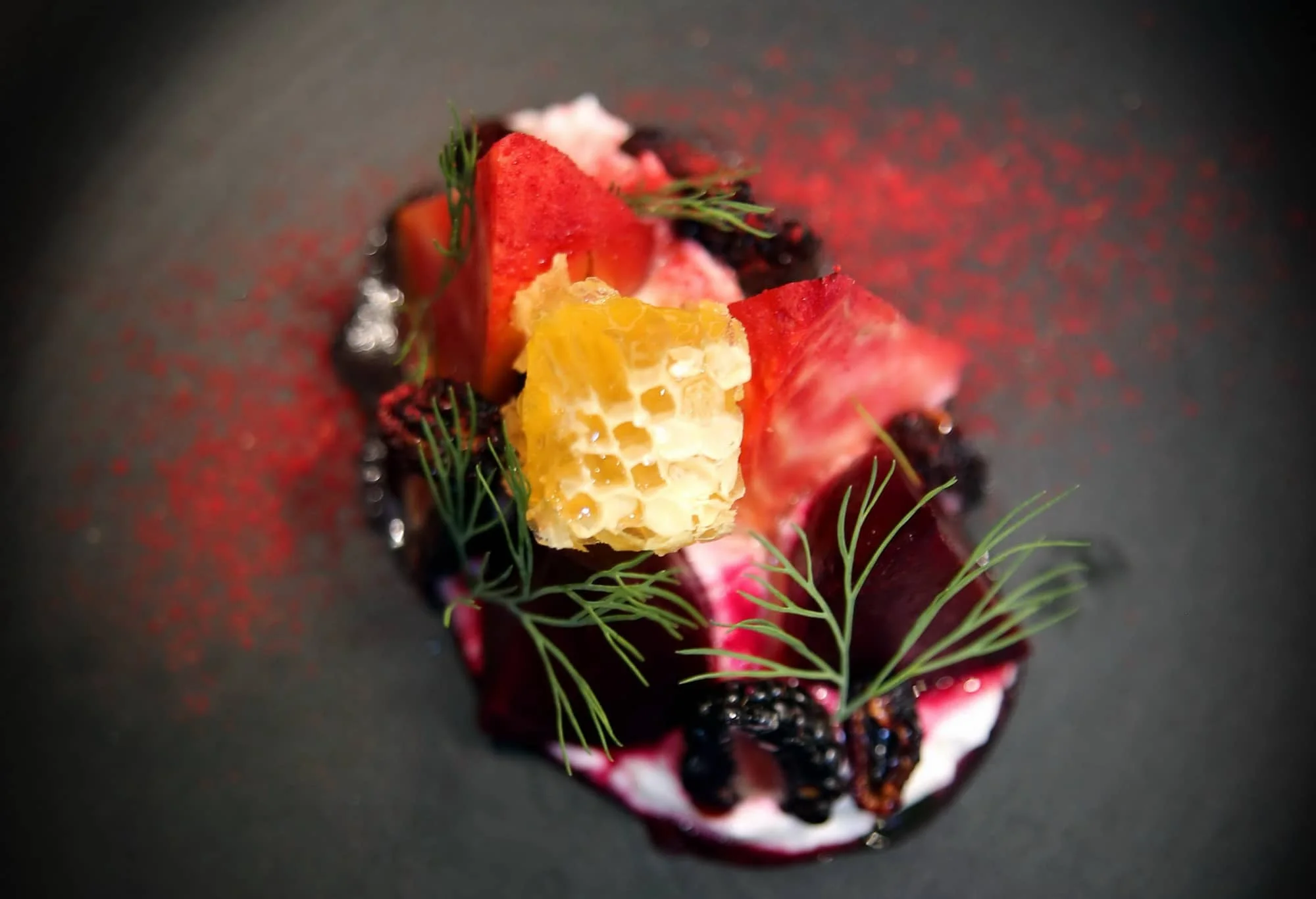
What other duties do you have on board outside of the galley?
Jimmy: We’re expected to do some watch duties when we’re at sea, and a watch every week or two when we‘re in port, but mostly our job is in the galley. We’re extremely lucky and grateful to the boss to be able to rotate, as for chefs it’s very hard to find a rotation job. Such jobs are rare because rotating chefs don’t want to leave the boat.
Shantala: We all try and help each other as much as we can on Hyperion, so if I’ve finished my duties in the galley, I’ll head up on deck and help out with wash-downs, etc. In turn, I get a solid helping hand with dishes and cleaning up when we’re on charter.
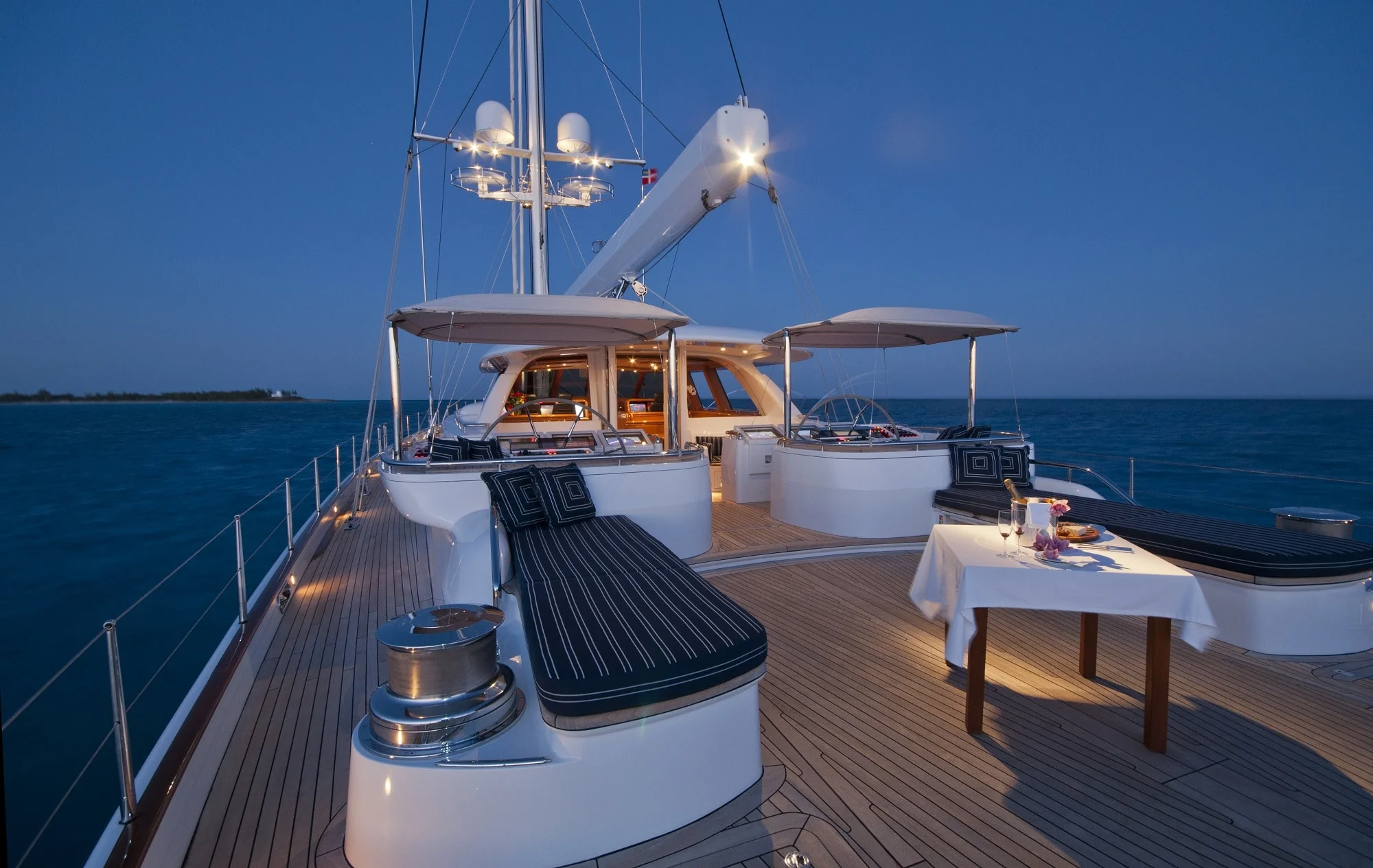
How do your duties vary between charter and private cruises?
Shantala: On charter, the day is quite different. My day will start at around five in the morning, and finish between 10 – 11 at night depending on guests. In addition to cooking breakfast, lunch and dinner for the guests with separate meals for children, I also cook for the crew, so the day can get pretty fast paced. When the owners or charter guests are not on board, the day is easier, but I still cook three meals daily for the crew, bake each day and test out new recipes.
Jimmy: Cruises with the owners become more familiar as you get to know them, along with their style and tastes. They use the yacht in a homely way, so they sometimes like more comfort food and barbeques on the flybridge. But they might require a last-minute dinner party, or more guests arrive at the last moment, so you need to step up to the plate and be ready to change the menu. A charter is different and it can be a challenge satisfying all the various tastes and dietary requirements of people you don’t know. Another growing consideration is intolerances to certain types of food such as gluten, which seem to be becoming more common.
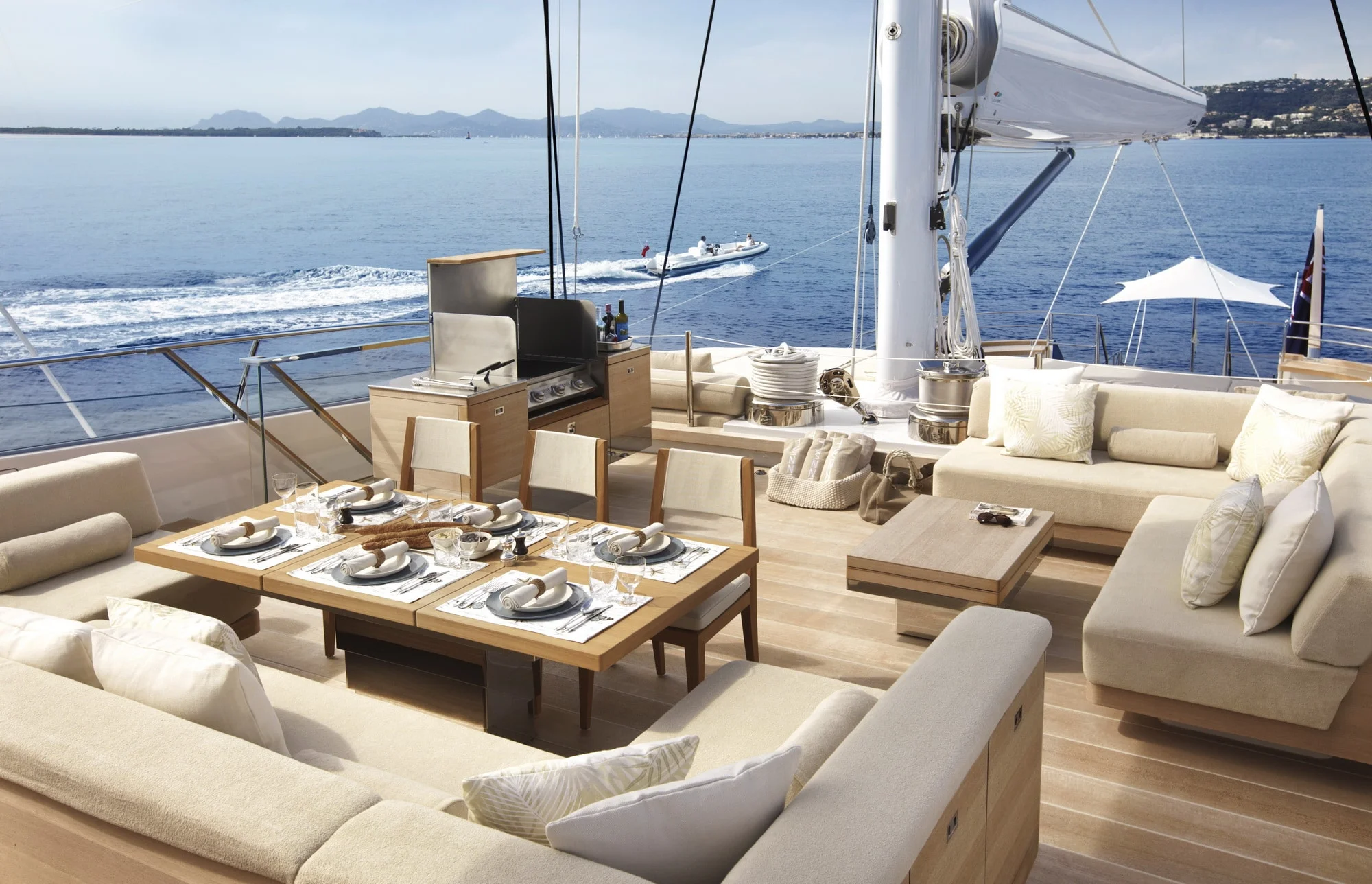
How are the cold storage facilities aboard the yacht. How many days can you go before re-provisioning?
Shantala: I’m pretty lucky on Hyperion as I have ample fridge and freezer space for a sailing yacht. There are four large fridges and four large freezers that run the entire wall of the crew mess, along with a huge floor fridge that comes in handy on charter. In addition, there is a walk-in pantry located just off the galley, as well as a large bilge space for the dry stores. With that extra fridge space in the floor, I can hold out before reprovisioning about as long as my vegetables can keep their freshness.
Ollie: We have the fridge capacity to cruise for 10 days or so without reprovisioning, and our freezer storage can keep us going for up to six months. We have a nice dry store as well, but it takes a lot of preplanning to provision properly.
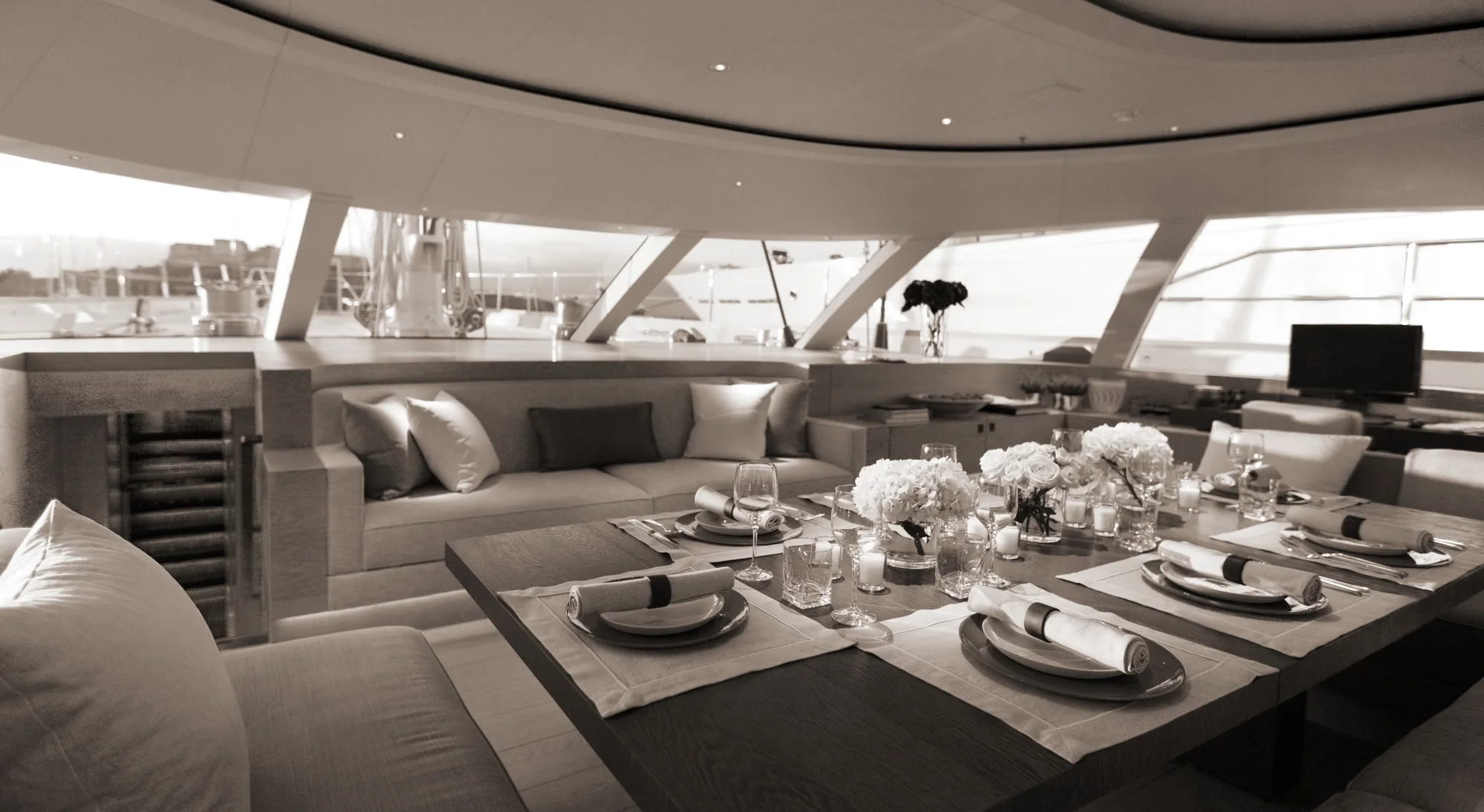
How do you source fresh produce while cruising?
Jimmy: It all depends on the location. In places like France, Italy and Spain, the local markets can supply most of what you need in terms of meat, fruit and vegetables. In the Caribbean, Greek Islands and Croatia, you might have to use agents that can fly in produce when requested. For example, you’re not going to find Japanese ingredients, Thai herbs or the best Parmesan cheese in a market in Montenegro or St Lucia. So we tend to stock up with the difficult to get dry or freeze-able goods when we’re in a yard period. Good fish is also getting harder to find as stocks dwindle. People think just because we’re at sea or in ports we always have a decent supply of fish, but that’s not the case. If the weather is bad, for example, the fisherman won’t go out, so you need to plan accordingly.
Shantala: Finding fresh produce or a great farmer’s market can be like stumbling upon gold. But when I don’t find those markets or the ones that I do find are grim, it can feel like the ruin of a great menu plan! It all depends on where we’re cruising. The quality and variety of fruit and vegetables sourced in the Med is never the same as what you might find in the Galapagos, for example. I’ll fly special produce in when absolutely necessary, or if a charter guest requests it. But if I can, I’ll use what’s locally on hand. I like the challenge of working with seasonal fruit and vegetables – some of the most creative dishes I’ve come up with are based on very simple ingredients.
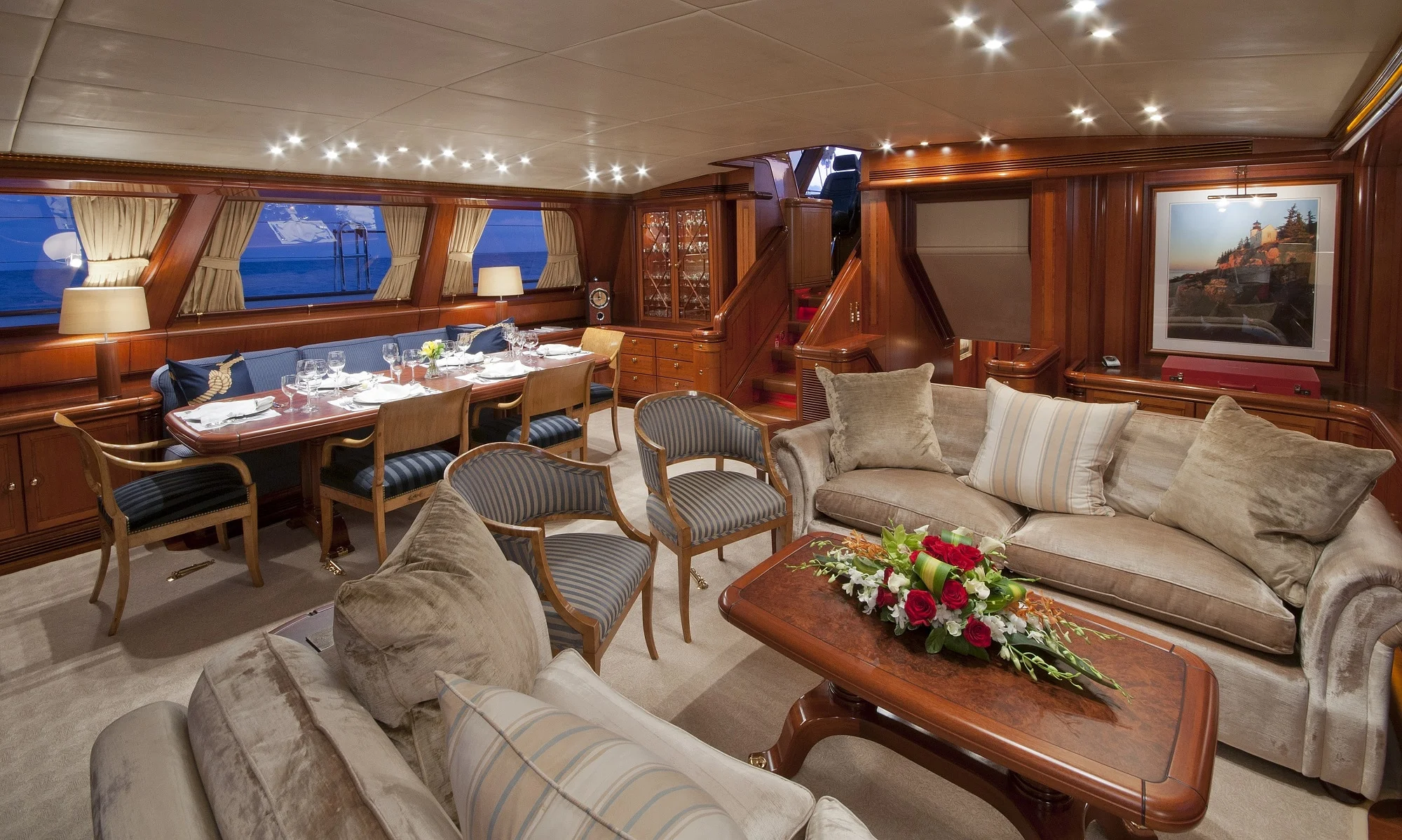
What is you favourite or most used kitchen appliance?
Shantala: I don’t have a huge amount of ‘toys’ in my galley due to the space restrictions, but I do have a Thermomix – my personal sous chef – that is regularly humming throughout the day.
Jimmy: The Thermomix by a mile. It’s a very handy tool that can make things such as a creme patisserie in minutes and always with consistent results. It also kneads your bread, blends soups and purées to perfection. Ollie: I don’t think there’s a restaurant or professional kitchen that doesn’t have one. Whoever owns that company must have made a lot of money – I wish I had thought of it ten years ago!
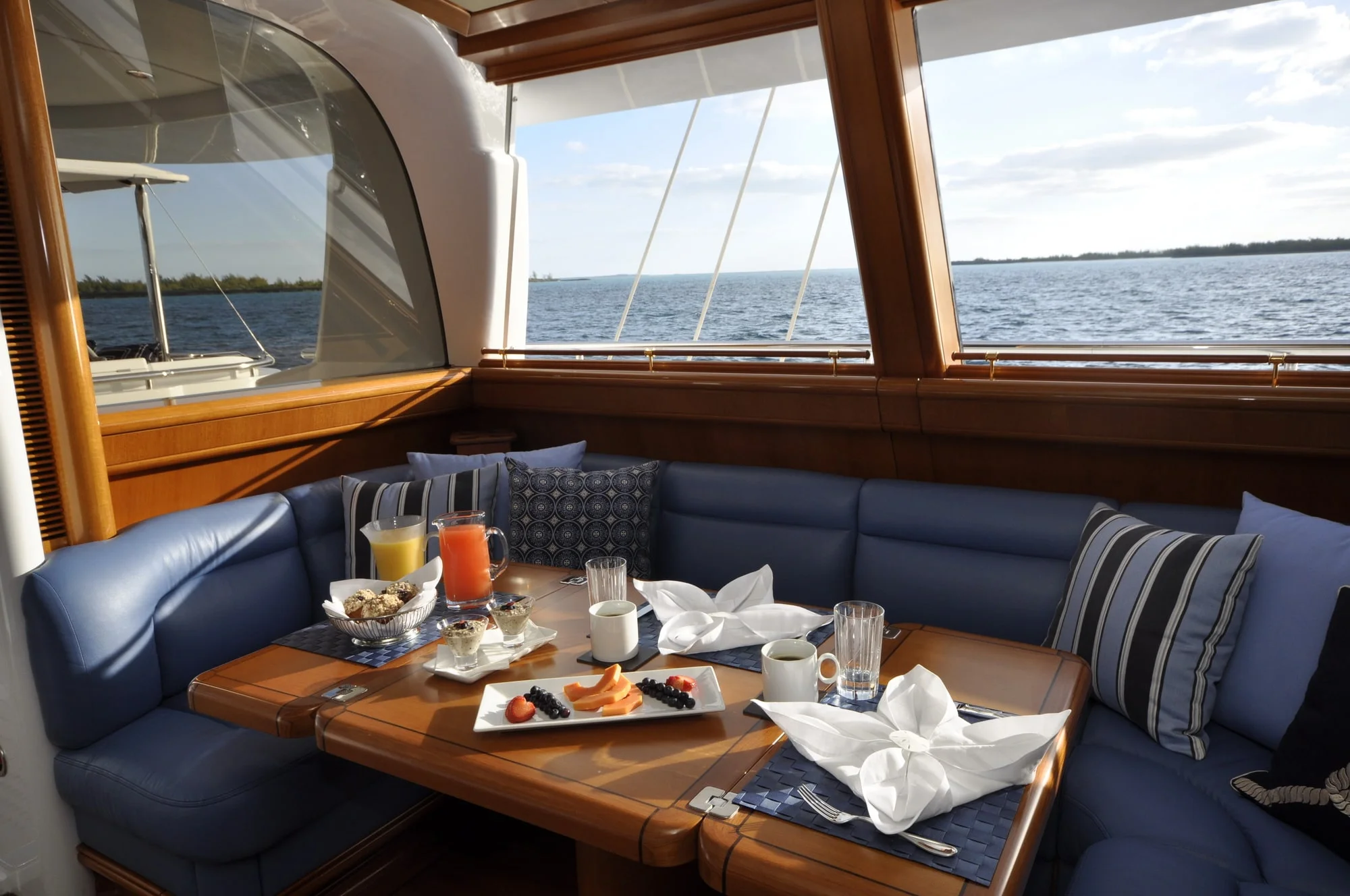
What style of cuisine is most popular?
Ollie: People are more health conscious these days, so there’s less of the heavy, Michelin-style cuisine in favour of healthier and lighter recipes, such as grilled dishes and fresh salads. The same thing is happening in the restaurant trade around the world, and the menu on board is a reflection of that. To keep it varied, I certainly try to cook with local ingredients and in the local style as much as possible.
Shantala: I try to keep things healthy and fresh, focusing on seafood, fresh salads and healthy grains. I’d say my food bounces between Mediterranean and Asian fusion. The menu changes daily, but the latest thumbs up I received was for slow-cooked Hoisin Beef with steamed bao buns. I love finding interesting or exotic produce and highlighting these ingredients in their most natural form. And of course there are the desserts – this is definitely where the magic lies and where guests are most impressed. I think I reach my most creative levels with pastry dishes.
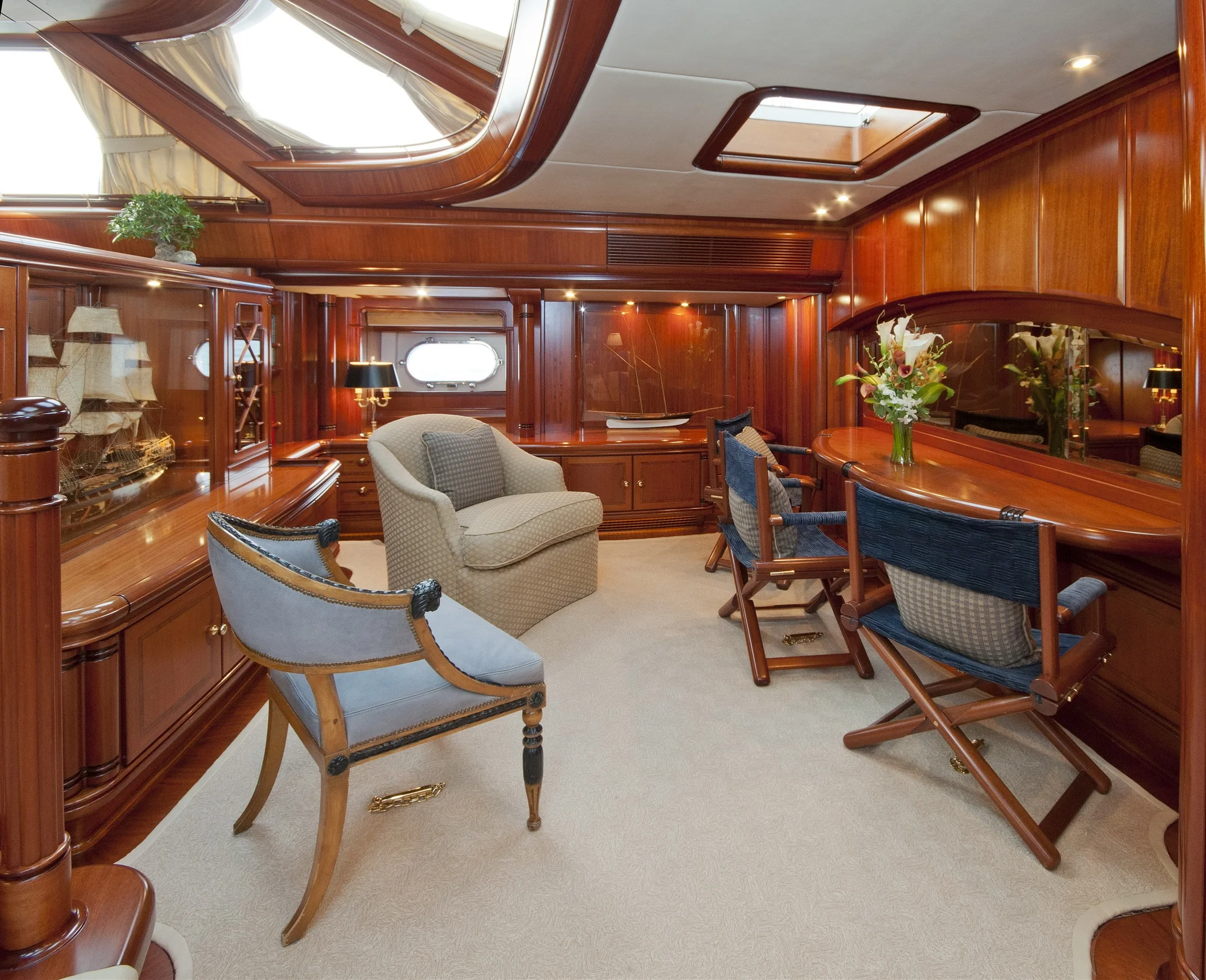
What is the most demanding and most rewarding aspect of your job?
Shantala: The most demanding aspect is definitely when we’re on charter. The best part is creating well-planned and tested recipes that plate up the way I imagined them to be.
Ollie: The most demanding part is keeping well stocked with fresh produce. In a restaurant you have deliveries every day, which you just can’t do on a yacht. The most rewarding aspect is keeping the guests and crew happy by preparing dishes that look good and taste good. There’s also the travelling part: you can still see the world and that beats being stuck in a restaurant kitchen every day of the week.
When asked about the most popular dish among guests on board, Jimmy responds: “Difficult to say, I would hope they love all of it, because that’s what we strive for!
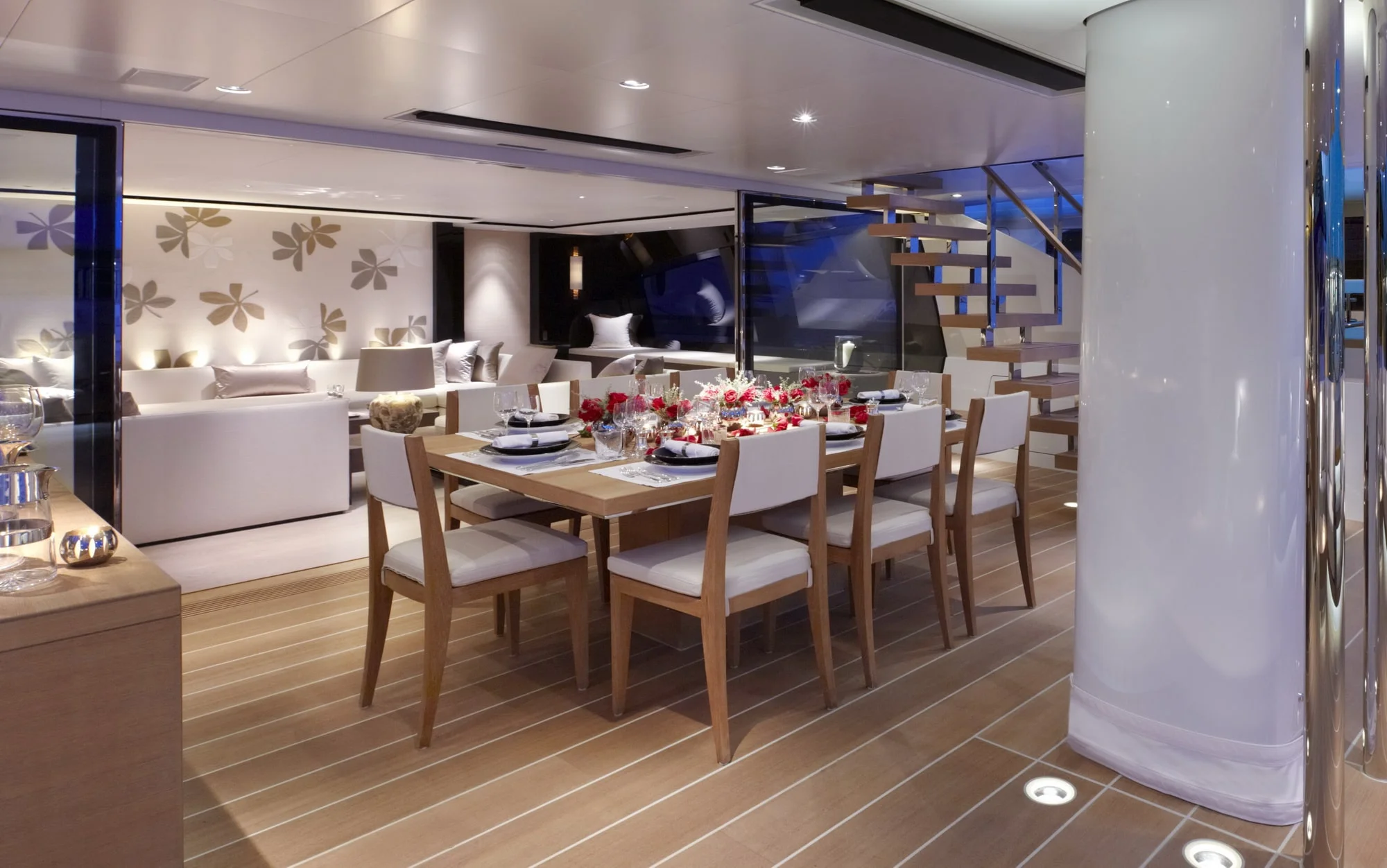
Royal Huisman yachts for charter
Most superyachts from the Royal Huisman fleet are for private use only and are enjoyed ‘to the max’ by their owners, families and friends – who sail them throughout the years on stunning locations all over the world. Only very few of these pedigree yachts like Hyperion and Twizzle are occasionally available for charter.
“Meet the chefs” was first published in a previous edition of “inhuis”. Although the chef from this article might not be onboard, it is the crew’s goal to give every charter guest an unforgettable experience. Follow the link to “Yachts” followed by “Yachts for charter” [click here] for more information about these yachts.
